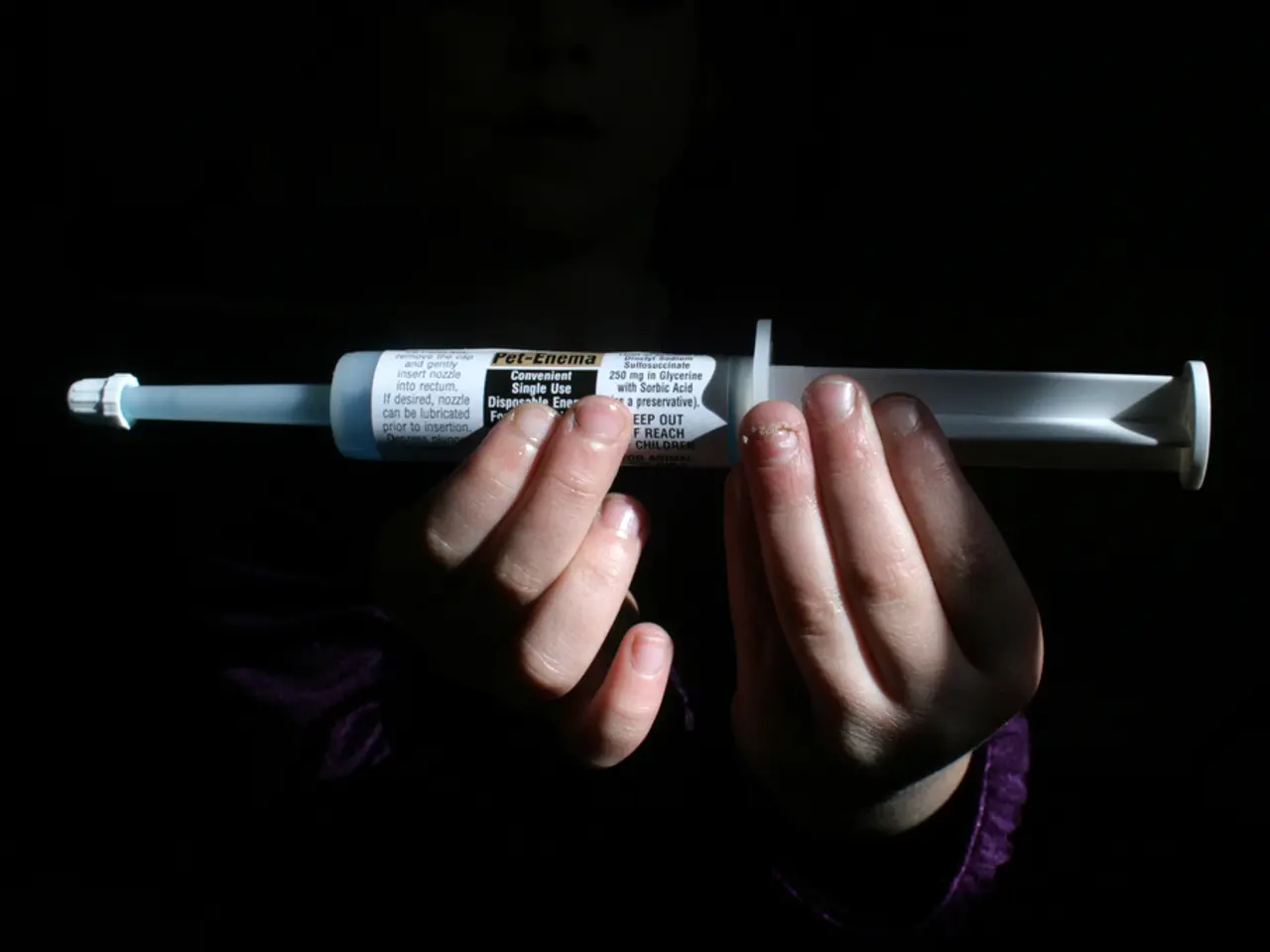Prescription Medication Guidelines: Details on Kalbitor potency, form, usage, and related info
In the treatment of acute hereditary angioedema (HAE) attacks, Kalbitor (ecallantide) stands out as a plasma kallikrein inhibitor. This drug is administered as a subcutaneous injection, typically in three separate injections of 10 mg (1 mL) each, amounting to a total dose of 30 mg for adults and children aged 12 years and older.
The typical dosing regimen for Kalbitor is well-established in medical guidelines and prescribing information. It is usually given as a single dose, with a second dose possible if symptoms persist or worsen, but it should not exceed a total dose of 30 mg within 24 hours.
Before starting Kalbitor, a treatment plan will be discussed with the patient by their doctor. It's important to note that the dosage prescribed may depend on a patient's body response and any serious side effects.
Kalbitor comes as a liquid solution in a 1 milliliter (mL) single-dose vial. Due to the risk of serious allergic reactions, including anaphylaxis, Kalbitor is given in a clinic or hospital. Patients may need to stay in the clinic or hospital for some time after the injections in case of a serious reaction.
Injection sites may be the same or different spots, and they are typically not given within 2 inches of areas where attack symptoms are occurring. It's worth mentioning that a similar drug, Ruconest, is given as an intravenous (IV) infusion and can be given by a healthcare professional or a caregiver at home.
Unlike Kalbitor, Sebetralstat and Orladeyo are used for different purposes in the management of HAE. Sebetralstat is dosed orally at 600 mg at the earliest sign of an attack for adults and children ≥12 years, with a possible second dose after 3 hours if needed. On the other hand, Orladeyo is for the prevention of attacks, typically dosed at 150 mg orally once daily for patients 12 and older.
It's essential to remember that dosing information for Kalbitor in younger children may be less established due to limited approval and clinical data in patients under 12 years. Always refer to prescribing information or consult a specialist in such cases.
Lastly, Kalbitor is a biologic drug, and a boxed warning, the most serious warning from the Food and Drug Administration, is associated with Kalbitor due to the risk of anaphylaxis. Kalbitor is not available in a biosimilar version.







